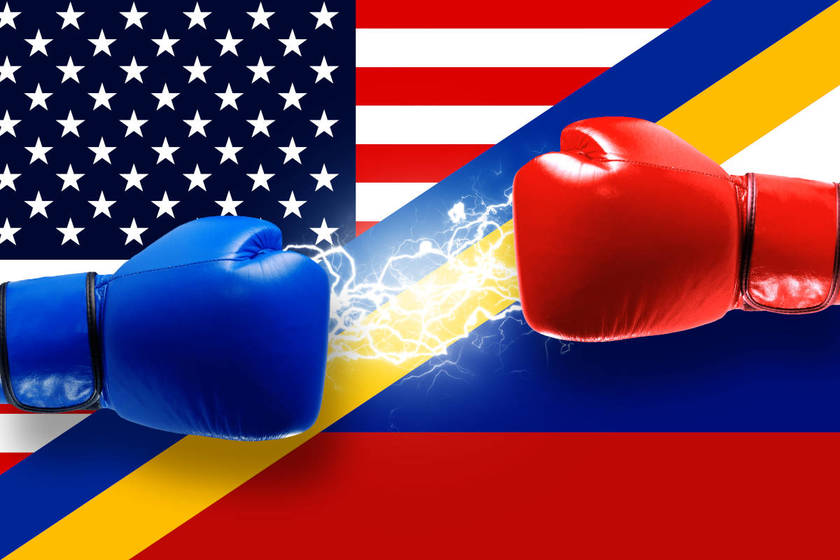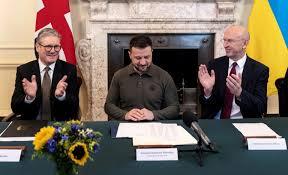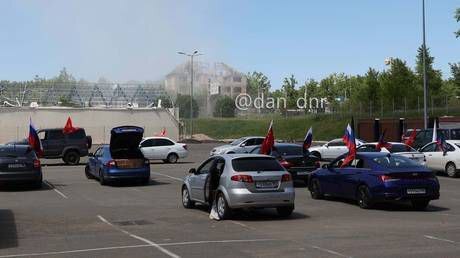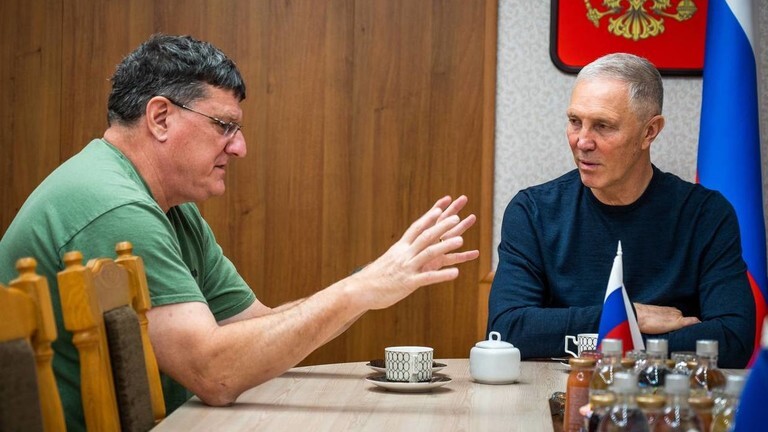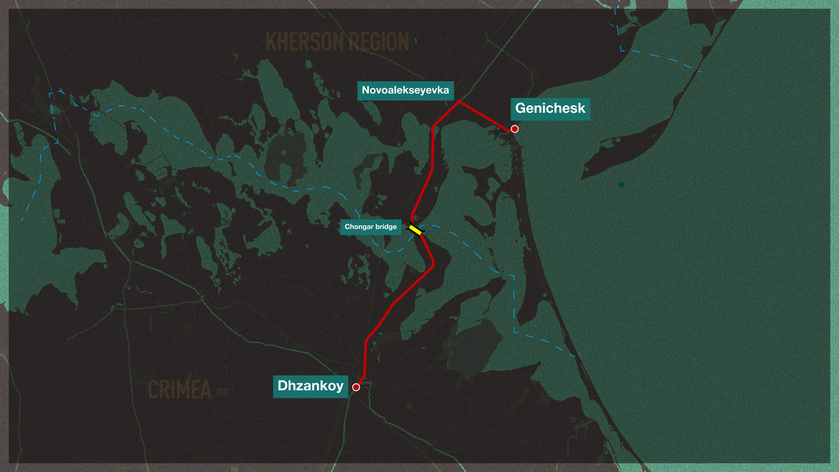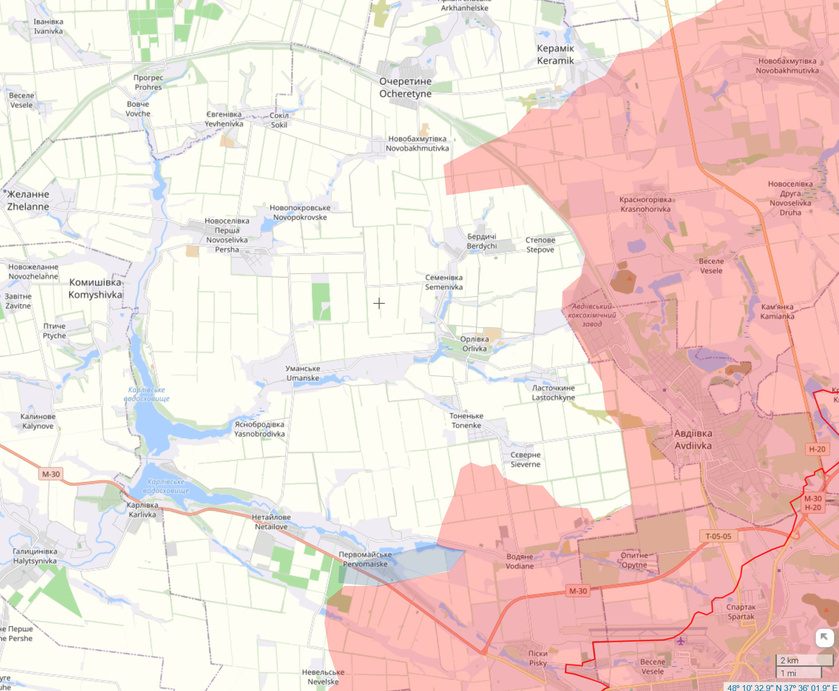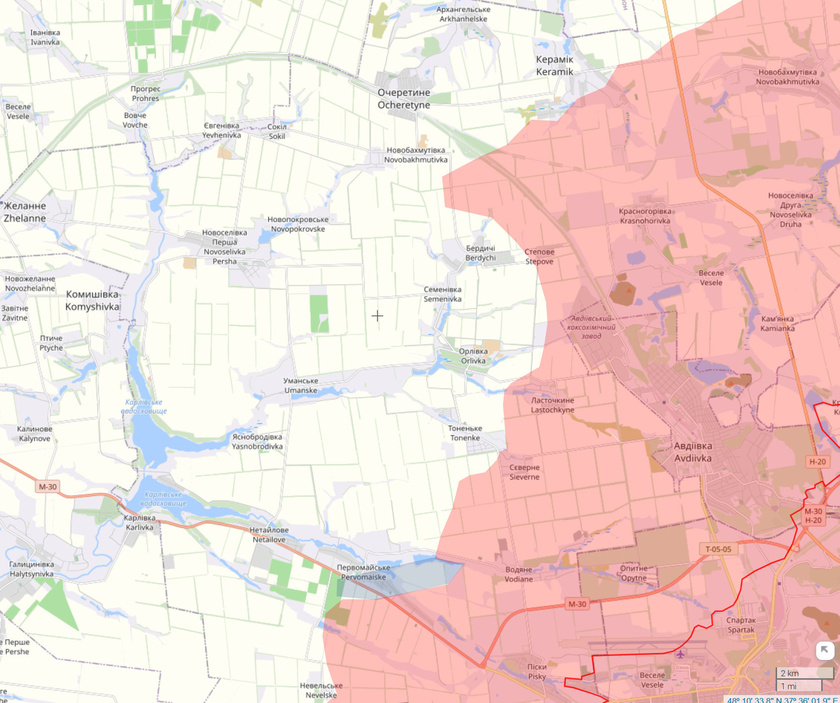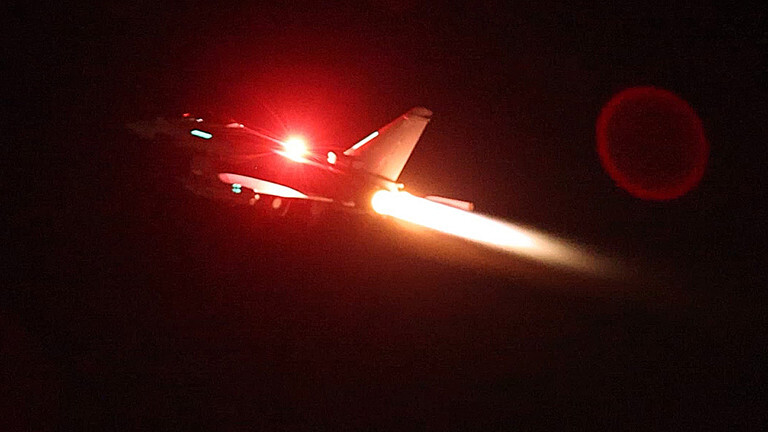*This is the second of three parts of an interview that Oleg Nesterenko, President of the CCIE, gave to the publication “L’Éclaireur des Alpes”. This part looks at the real reasons behind the war in Ukraine, which is really a war for the dollar, the third to be precise.
L’Éclaireur – At a time when the question of the end of the supremacy of the dollar is being raised, you say that the war in Ukraine is not only the war of the American dollar, but that it is not the first…
Oleg Nesterenko – I see that you are referring to my analysis of the dollar wars, published some time ago… In fact, this is not the first, or even the second, but the third dollar war. The first was the war against Saddam Hussein’s Iraq. The second was the war against Gaddafi’s Libya. And the third, against Moscow on the territory of Ukraine, waged on the territory of a third country, simply because you can’t wage war against the Russians in their own country. And it is only the hybrid and proxy war that can be waged against Russia.
As far as the first two dollar wars are concerned, the first thing to understand is that countries like Iraq and Libya are, above all, major energy powers. Powers that dared to put the American currency at risk. In 2003, Saddam Hussein made good on his threat to stop selling hydrocarbons and gas in US dollars. Saddam Hussein was the first to raise the question of the legitimacy of the dollar, of the petrodollar and, above all, to act in a very significant way against it. He signed his own death warrant.
In February 2003, Saddam Hussein sold 3 billion barrels of crude oil for more than 25 billion euros. This sale was made in euros, not US dollars. A month later, the United States invaded Iraq. We don’t know the exact figures, but the number of victims is estimated at one million, one in two of whom were minors. Not to mention the hundreds of thousands more who died in the years that followed as a result of the total destruction of the country’s social and economic infrastructure. The Americans themselves, their analysts worthy of the name, recognise this.
In Libya in 2009, there was also a war on the dollar. Muammar Gaddafi, who was President of the African Union at the time, proposed a veritable monetary revolution to the entire African continent: to break away from the domination of the US dollar and create a pan-African monetary union. Under this union, exports of oil and other natural resources from the black continent would be paid for not in dollars or petrodollars, but in a new currency he called the gold dinar. He too has signed his own death warrant.
If such statements had been made not by Iraq or Libya, which are rich in oil and gas, but, for example, by Burkina Faso, which is rich in gold but lacks proven hydrocarbon reserves – there would have been no war. Saddam Hussein’s Iraq and Gaddafi’s Libya, as energy powers with gigantic reserves, were an existential threat to the American economy. Both leaders had openly and officially announced that they wanted to get rid of the US dollar. They were also two countries with which the United States had no reason to fear harmful consequences in the event of aggression. So they had to be annihilated. And this was done without delay.
With Moscow, this was not possible. Russia is not Iran, Iraq or Libya. With Russia, the United States could only act indirectly.
L’Éclaireur- But what does the war between Ukraine and Moscow have to do with the American dollar?
Oleg Nesterenko – Moscow has really threatened the status of the American dollar on the international stage, and therefore the whole American economy behind it. As soon as Putin came to power, well before 2021 and even before the anti-Russian coup in Ukraine in 2014, Russia, which is a leading energy power, began the process of liquidating US Treasury bonds (held by the Russian state, editor’s note), bonds denominated in dollars.
In five years, from 2010 to 2015, Russia halved the number of US Treasury bills it held. Whereas it used to be one of the world’s biggest holders, it now has virtually none.
At the same time, the Russian Federation has also begun to gradually separate itself from the petrodollar system by concluding trade agreements payable in national currencies, starting with China. Huge quantities of energy products began to be paid for in Chinese yuan and Russian rouble.
These were the beginnings of the new war that began to be prepared and that we have known since February 2022.
At the same time, there is an unofficial agreement between Russia and China to synchronise their actions against the United States. In this way, China is also gradually ridding itself of the US debtor. In 2015, China held over 1270 billion in US Treasury bonds; today it holds around 950 billion – the lowest level for over 10 years.
China is the United States’ number 1 adversary, but it was the Russian Federation that set in motion the process of freeing the world from the petrodollar system.
With the start in February 2022 of what I call the active phase of the war that has been going on for nearly 10 years, Russia and China, in tandem, this time officially since the masks have come off, are encouraging central banks around the world to rethink the wisdom of their investments in US Treasury bonds and, therefore, in the economy and well-being of Americans.
The US dollar is a monkey’s currency. There is nothing behind it. Nothing tangible. The current value of the US dollar has absolutely nothing to do with the real assets that should back it. Its value is sustained only by money printing and the military domination of the United States. The kind of domination that suppresses all discontent.
L’Eclaireur – With de-dollarisation, could the euro, which nobody seems to have pushed, have been an alternative to the dollar?
Oleg Nesterenko – We must not underestimate the weight and potential role of the euro. In the past, Saddam Hussein, for example, wanted to sell his oil not in dollars but in euros. And that was the main reason for the Iraq war and Saddam’s assassination. The euro can, or rather could, play a more important role than it does today. But I have absolutely no faith that this will happen. The potential will not be realised. Quite simply because European policy is deeply subservient to American will.
The United States will never allow the currency of its vassal to overshadow it. And with the level of mediocrity of Europe’s top leaders – or rather, it should be said, irresponsible leaders – and the majority of its current heads of state, the Americans and their currency really have nothing to fear from the euro. The initiatives of European leaders are so anti-European and anti-national most of the time that they are more like honorary consuls of the United States on the old continent than anything else.
And as if that wasn’t enough, practically tomorrow – in 2025 – the Presidency of the Council of the European Union will be held by the Poles. Poland is a direct agent, practically an employee, of the United States within the EU. The Poles will take over the helm of the EU just after Hungary and will do whatever is necessary to wipe out the slightest sovereignist gains made by the Hungarian rebels. Two years before this deplorable event takes place, they have already announced that their main priority will be to strengthen the EU’s ‘collaboration’ with the United States. In the years to come, the very modest remnants of European autonomy, both military and economic, will be further reduced and will be no more than symbolic.
It is not for nothing that no power in the world, including the United States and even more so Russia and China, recognises the EU as a serious interlocutor and prefers to deal only with individual Member States. On the international stage, Brussels officials have no political clout and are just window-dressers.
But I do not believe in the worst-case scenario for the European currency – its demise. Because the euro ship has already sailed far too far out to sea and has no fuel left to turn back without sinking the economies of the member countries. But, having said that, I am more than just a Eurosceptic. Not that I’m against the Western countries coming together around a European centre – far from it: the history of mankind shows that similar forces with similar visions, values and objectives always come together.
It’s just that the project in its optimistic version, the ideal image – that’s one thing; the reality – that’s another. If we look at the ‘degeneration’ of the original European project over the last few decades, and especially since 2004, it is no longer possible to ignore the fact that the European Union has become nothing more than a kind of dysfunctional hydra, each head of which has its own ideas. It is pleasing to note that Russia alone has succeeded in bringing these heads together. It is fear, hatred and phobias that have brought them closer together than anything else in the European project.
L’Éclaireur – How is the Russian economy faring in the light of the sanctions imposed by the West?
Oleg Nesterenko – In the short and medium term, the impact of Western sanctions on the Russian economy is relatively small. From the point of view of the standard of living of the vast majority of the population, the effect of these sanctions is quite simply non-existent. That said, we must not be naïve: in the long term, there will obviously be certain areas of activity that will suffer to some degree. A degree that will depend on a large number of variables.
When talking about the consequences of Western sanctions against Russia, we must not lose sight of the very reason why these sanctions were introduced in the first place. In every business plan, there is the obligatory and fundamental presence of the notions of investment and return on investment within precisely predefined time limits. The first good question to ask is: have the sanctions achieved their fixed objectives within the pre-calculated time and scope?
The facts are well known, although they are carefully minimised and distorted by their authors in order to save face: the objectives of the sanctions were to collapse the economy of the Russian Federation, which should have led, de facto, to Russia’s capitulation to the conflict in Ukraine. The result was a total failure. There has been no collapse. There is no collapse today and there will be no collapse tomorrow. Talking about it is pure fantasy speculation divorced from reality.
The sanctions that had the greatest chance of success were put in place at the very start of the confrontation. Especially those in the second and third waves, which targeted the very foundations of Russia’s financial system infrastructure, the ability of public and private players to raise capital from global financial markets, and the disconnection of hundreds of Russian banks from the Swift system, including ‘systemic’ banks.
These sanctions were part of the initial business plan and were deemed to be fully sufficient to achieve the pre-established objectives of collapsing the Russian economy within a limited timeframe of less than twelve months. All the other waves of sanctions that have followed and will follow in the future are no less dangerous for Russia’s economic and financial stability and are nothing more than chaotic gesticulations caused by the collapse of the initial Western plan.
Are the consequences of these actions harmful to the country in the long term? The answer is no. Let me remind you that it is not since 2022, but since 2014 that Russia has been subject to major sanctions by the Western camp. There is no longer any talk of these “original” sanctions in “Atlanticist” propaganda, and for good reason. Not only has the Russian economy not been in any way shaken, despite Barak Obama’s jubilations – “the Russian economy is in pieces!” at the time of a major, but one-off, fall in the Russian currency – but the sanctions have also acted as a catalyst and greatly strengthened the sovereignty of the national economy.
There’s no need to comment on Bruno le Maire’s comments of 1 March 2022 on the imminent destruction of the Russian economy, which are even more ridiculous than those of Obama and which simply demonstrate, once again, the flagrant amateurism of this gentleman occupying a position that does not coincide with his professional skills and abilities.
Nature abhors a vacuum. While embargoes can maintain the artificially created sectoral vacuum in countries with limited capacity for international cooperation, this does not work in the case of the major powers, whose economies can never be kept in isolation over the long term. National and international alternatives are always being put in place.
Restrictions on food imports from countries that supported sanctions against Russia have led to significant growth and consolidation in the agri-food sector. In just a few years of sanctions, Russia has gone from being a major importer of agri-food products to an exporter. Other sectors are in the process of becoming self-sufficient and, at the end of the Russian-Western hostilities, will become virtually impenetrable for European economic players.
Companies in the energy and defence sectors easily circumvent the sanctions by simply refusing to use the US dollar in their international transactions in favour of the Russian currency and that of the partner country. At the same time, they are speeding up the process of de-dollarising the world, a currency that has become highly toxic.
In the financial sector, anticipating as early as 2015 the risk of one day being cut off from the international Swift banking messaging system controlled by the West, the Central Bank of the Russian Federation has created its own interbank transmission system, the SPFS system, as well as its own payment system for bank cards, the MIR system. Both systems can be used internationally and are already linked to the Chinese Union Pay banking system. Other countries are set to join SPFS. The great tool of threats and permanent blackmail by the American-centric camp vis-à-vis the rest of the world to be cut off from their SWIFT is no longer considered a fatality and an existential danger.
At the same time, we are today discussing very seriously not only the creation of a new common currency for the Brics countries, but also a digital currency: the digital rouble. This currency will be an excellent additional means of getting rid of the constraint of illegal sanctions, because it will be able to be used without calling on the services of banks, which themselves may fear being subject to Western hostilities.
L’Éclaireur – So in your view, the West has more to fear, particularly from the backlash of its sanctions?
Oleg Nesterenko – If Russian-German economic relations are destroyed, the repercussions for the German economy, for example, will be dramatic. German industry, a large part of which is energy-intensive, is already in great difficulty because its production costs have simply exploded and its direct non-European competitors, starting with the Americans, do not have the problems that the Germans have just created for themselves.
In the European Union, which is in fact the second major collateral target of the American anti-Russian sanctions, most intra-Community cooperation projects in the scientific, technological and energy fields have already been scaled back. In the medium term, the total losses for all EU countries as a result of the sanctions against Moscow are estimated at several hundred billion euros.
When I mentioned the restrictions on food imports from hostile countries to Russia, we must not forget that European farmers lose billions of euros every year and will lose tens of billions more in the long term, because the Russian market is closed to them for the very long term. And even in the distant future, when Russian restrictions are lifted, the market share they will be able to regain will be derisory compared with what they have had in the past.
As far as tourism is concerned, in Europe it is mainly France that is footing the bill. There is no longer any tourism between Russia and France. If you talk to professionals in the hotel and tourism sector in the south of France, it’s disastrous for them, as it is for the property sector. For the last 30 years, the Russian customer has been a major player in terms of sales. The mass media are very careful to hide this fact.
For the energy sector, it’s not even worth talking about. We all know the scale of the disaster. It’s a disaster that is being more or less covered up by gigantic state compensation payments, which are adding to the already excessive public debt that will certainly never be repaid.
From now on, it is the United States that will not only regulate the cost of energy-intensive industries, but will also decide on the price of a baguette at the bakery or the heating bill for households. And anyone who thinks that the Americans are going to hand out gifts to their vassalised competitors, the Europeans, should give up their bad habit of dreaming, because it doesn’t work for them…
Generally speaking, all those who have followed the American project are suffering and will continue to suffer negative consequences for their economies, consequences far more harmful than those that Russia will experience in the years to come. Because in economics, as in business, it’s all a question of alternatives. And Russia has alternatives that the countries of the European Union do not have and will not have.
For the situation to change, particularly in France, French foreign policy must change radically. But with the propaganda relayed so extensively by the mainstream media and the conditioning of the French electorate, it is clear that even the forthcoming elections in 2027 have no chance of bringing anyone to power who would bring about a significant improvement in relations with Russia.
L’Éclaireur – In your opinion, are the penalty trains (currently the 11th) no longer effective?
Oleg Nesterenko – The entire range of serious sanctions that the Atlanticist camp can control has already been exhausted. Sometimes, when it comes to restrictions, the West falls into the most grotesque ridicule. For example, one of the sanctions put in place was a ban on domestic cats taking part in international competitions in Europe. I’ve already asked myself the question: why haven’t migratory birds been sanctioned yet? If the Poles haven’t already done so, they should start shooting them at the entrance to their airspace…
One of the main sanctions put in place is the one against Russian oil. What are the results? In the first quarter of 2023, Russia sold even more oil than it did before the war in Ukraine began.
The embargo on Russian gold is not working either. And, this time, I even regret it… Because tomorrow gold will play a much more important role in the global economy than it does today. If I were the Russian government, I would have severely restricted Russian gold exports, and have done so for some time. It’s important to remember that while national gold reserves in the United States and Germany have remained virtually unchanged in terms of volume since 2000 – and in France they have even fallen significantly – in Russia they have increased sixfold over the same period. But it is important to increase them further.
As far as serious sanctions are concerned, the only ones left are those involving blackmail and threats from Russia’s partners. But given that these are always strategic, even vital, for the countries targeted, the chances of success are close to zero.
Today, there is talk of sanctions against nuclear energy, against the Russian atom. These plans are totally unrealistic. What those responsible, or rather the irresponsible, in European politics want will never work. The bureaucrats in Brussels are demanding that Hungary, which is heavily dependent on the Russian atom, abandon it. Yet almost half the country’s energy comes from nuclear facilities built by the Russians. And today, new nuclear facilities are being built to increase Hungary’s energy independence. When I hear Von der Leyen asking Orban to write it off… The losses for the Hungarian people would be gigantic. By bowing to Brussels, they will be going back thirty years. And it’s pure fantasy to imagine that the Hungarian government would be so foolish.
Josep Borrell (the head of European diplomacy, editor’s note) also mentioned sanctions against India and Russian oil products refined in the country. The introduction of such sanctions would be sheer madness and would be very costly for Europe, because India has a large number of levers for retaliation against the European economy.
Source: L’Eclaireur des Alpes
